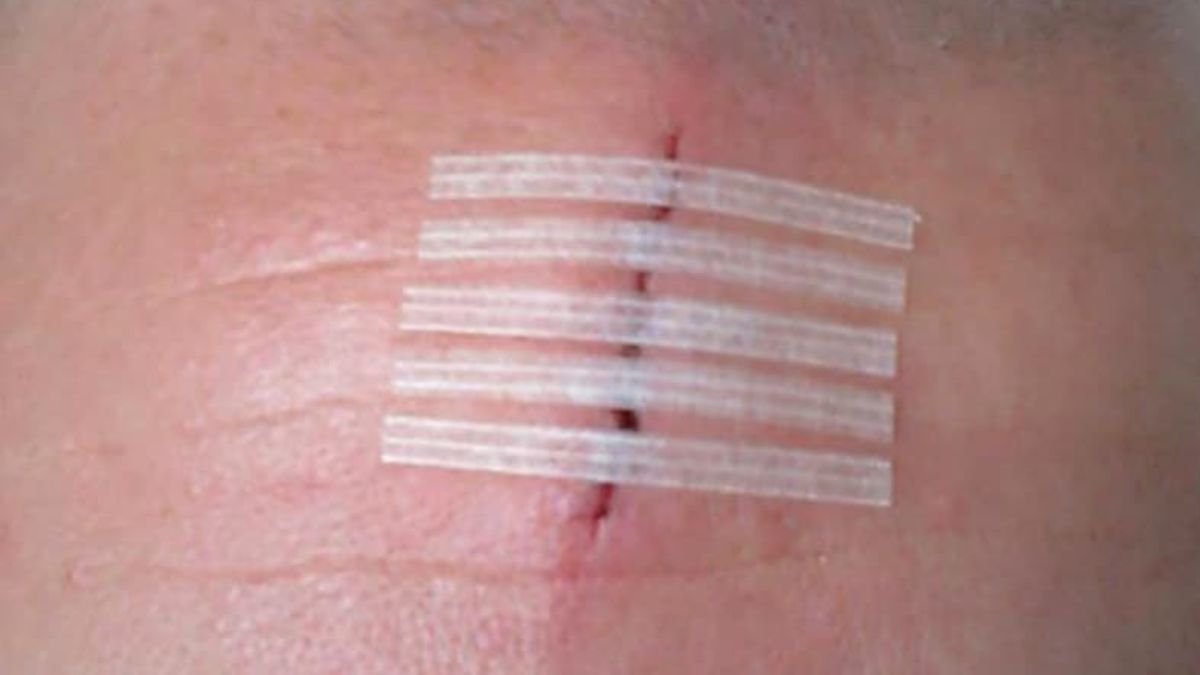Welcome to our essential guide on Steri Strips – your go-to resource for wound closure and healing. Whether you’re a healthcare professional or simply someone interested in learning more about this versatile adhesive, you’ve come to the right place.
In this comprehensive article, we’ll take you through everything you need to know about Steri’Strips – from what they are and when to use them, all the way to caring for them and exploring alternative options. So let’s dive in and discover how these little strips can play a big role in promoting effective wound closure!
But first, if you’re wondering what exactly Steri Strips are, keep reading!
What are Steri Strips?
Steri Strips, also known as butterfly stitches or adhesive skin closures, are thin, sterile adhesive strips used to close small wounds and lacerations. They are made of non-woven fabric or plastic material and feature a hypoallergenic adhesive on one side.
These versatile strips provide an alternative to traditional sutures or staples for wound closure. They work by pulling the edges of the wound together, promoting natural healing and reducing the risk of infection. Steri’Strips can be applied in various shapes and sizes depending on the size and location of the wound. They provide gentle yet effective support that allows for flexibility and movement while ensuring proper alignment for optimal healing.
When to Use Steri Strips
Steri strips are an excellent alternative for closing wounds that are not too deep or require stitches. They can be used in various situations, such as small cuts, lacerations, and surgical incisions.
If the wound edges are clean and not gaping, Steri’strips can help bring them together and promote healing. These adhesive strips work best on areas with minimal tension or movement, like the face or limbs. However, it’s important to note that Steri’strips should not be used on infected wounds or those with heavy bleeding. In such cases, seeking medical attention is crucial.
Using Steri strips at the right time can aid in wound closure and ensure a smoother healing process.
How to Apply Steri Strips
Applying Steri Strips is a simple process that can help promote wound healing and prevent infection. Before starting, make sure the area around the wound is clean and dry. Gently pull the skin together to align the edges of the wound, ensuring proper closure.
To apply Steri Strips, start by removing any excess hair from the surrounding area with scissors or clippers if necessary. Next, open each individual strip package and remove one strip at a time. Place one end of the strip on one side of the wound while gently stretching it across to meet the other side. Press down firmly on both ends of the strip to secure it in place.
Remember not to overtighten or overlap Steri’Strips as this may hinder blood circulation or cause irritation to sensitive skin. If additional support is needed for larger wounds, consider using multiple strips in parallel rows for added reinforcement. Always follow your healthcare professional’s instructions for specific application techniques based on your unique situation.
Correctly applying Steri’Strips helps ensure optimal wound closure and healing while reducing scarring risks.
Caring for Steri Strips
Caring for Steri Strips is an important part of ensuring proper wound healing. After applying the strips, it’s crucial to keep them clean and dry. Avoid getting the strips wet as moisture can loosen their adhesive properties. When showering or bathing, cover the area with a waterproof dressing or plastic wrap to protect the Steri Strips.
Additionally, be gentle when drying the surrounding skin after washing, patting it gently with a towel instead of rubbing vigorously. Avoid using creams or ointments on or near the Steri’Strips unless specifically instructed by your healthcare provider. If any redness, swelling, or signs of infection develop around the strips, consult your doctor immediately for further guidance and possible removal if necessary. Proper care will help facilitate optimal healing and prevent complications in your recovery process
The Benefits of Steri Strips
Steri strips offer several benefits when it comes to wound closure and healing. First and foremost, they provide a non-invasive method of closing wounds without the need for stitches or staples. This can be particularly beneficial for small cuts or lacerations that don’t require more intensive treatment.
Another advantage of using steri’strips is their flexibility. Unlike traditional bandages or dressings, these adhesive strips are designed to move with your skin, allowing for greater comfort and range of motion during the healing process.
In addition, steri strips create a barrier over the wound site, protecting it from dirt, bacteria, and other contaminants that could potentially lead to infection. By keeping the wound clean and protected, steri strips promote faster healing and minimize the risk of complications. So if you’re looking for an effective alternative to stitches or staples that offers flexibility and protection while promoting optimal healing conditions, consider giving steri strips a try!
Variations of Steri Strips
When it comes to wound closure, there are different variations of steri’strips available. These adhesive strips come in various sizes and shapes to suit different types of wounds.
One common variation is the reinforced steri strip, which has additional strength due to the reinforcement threads embedded within the adhesive material. This type is often used for larger or more complex wounds that require extra support during healing. Another variation is the elastic or stretchable steri strip, which provides flexibility and allows for movement without compromising the wound closure. These can be particularly useful in areas where joints or muscles need to move freely.
Having a variety of options when it comes to steri strips ensures that medical professionals can choose the most appropriate option based on individual patient needs and specific wound characteristics
Alternatives to Steri Strips
If you’re in a situation where Steri Strips are not available or suitable for wound closure, there are alternative options to consider. One common alternative is adhesive bandages, also known as “Band-Aids.” These can be used to cover small cuts or wounds and provide protection while promoting healing. Another option is surgical glue, which creates a strong bond between the skin edges without the need for sutures or strips. It is important to consult with a healthcare professional before using any alternative method to ensure it is appropriate for your specific wound.
Another alternative to Steri Strips is butterfly closures, often called “butterfly stitches.” These adhesive strips pull the edges of the wound together to promote healing and reduce scarring. While they may not have as much holding strength as Steri’Strips, butterfly closures can still be effective for smaller wounds that do not require heavy tension. As with any wound closure method, proper cleaning and disinfection should always be done prior to application of any alternatives to ensure optimal healing conditions.
Additional Tips for Using Steri Strips
1. Keep the area clean and dry: It is important to keep the area around the Steri Strips clean and dry to prevent infection. Avoid getting the strips wet during activities like showering or swimming.
2. Avoid excessive movement or tension: Excessive movement or tension on the wound can cause the Steri’Strips to come off prematurely. Try to minimize movements that may put strain on the wound, especially in areas where there is a lot of joint movement.
3. Don’t pick at or remove Steri Strips too early: It’s natural to want to remove the strips once your wound starts healing, but it’s best to let them fall off on their own as they will eventually lose their adhesive properties. Removing them too early may disrupt proper wound closure and increase scarring risk.
4. Monitor for signs of infection: While Steri Strips are effective in preventing infection, it’s still crucial to monitor your wound for any signs of redness, swelling, increased pain, or discharge that could indicate an infection. If any concerning symptoms arise, seek medical attention promptly.
5. Follow healthcare provider instructions: If you have received specific instructions from your healthcare provider regarding using Steri’Strips for a particular type of injury or surgical procedure, make sure you follow them closely for optimal results.
Remember that while Steri Strips can be a great option for certain types of wounds, they are not suitable for all injuries or situations. Always consult with a healthcare professional if you’re unsure about whether using Steri Strips is appropriate for your specific case.
By following these guidelines and properly caring for your wounds with Steri Strips, you can promote optimal healing and minimize scarring risk. Remember that each person’s healing process may vary slightly, so be patient as your body works its magic!
Now armed with this essential guide on using Steri Strips effectively and safely, you can confidently take care of minor wounds and support their healing process.











